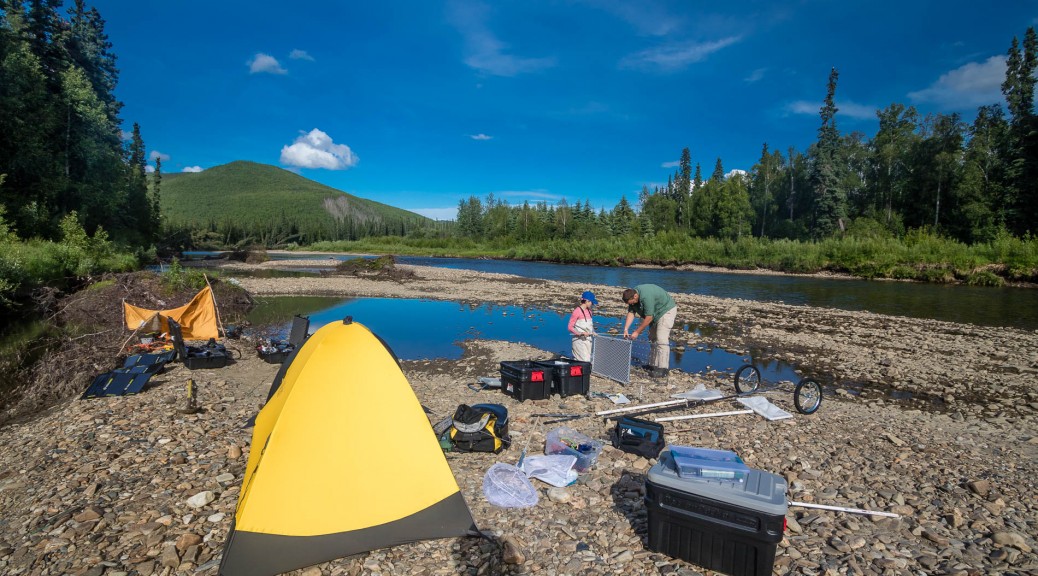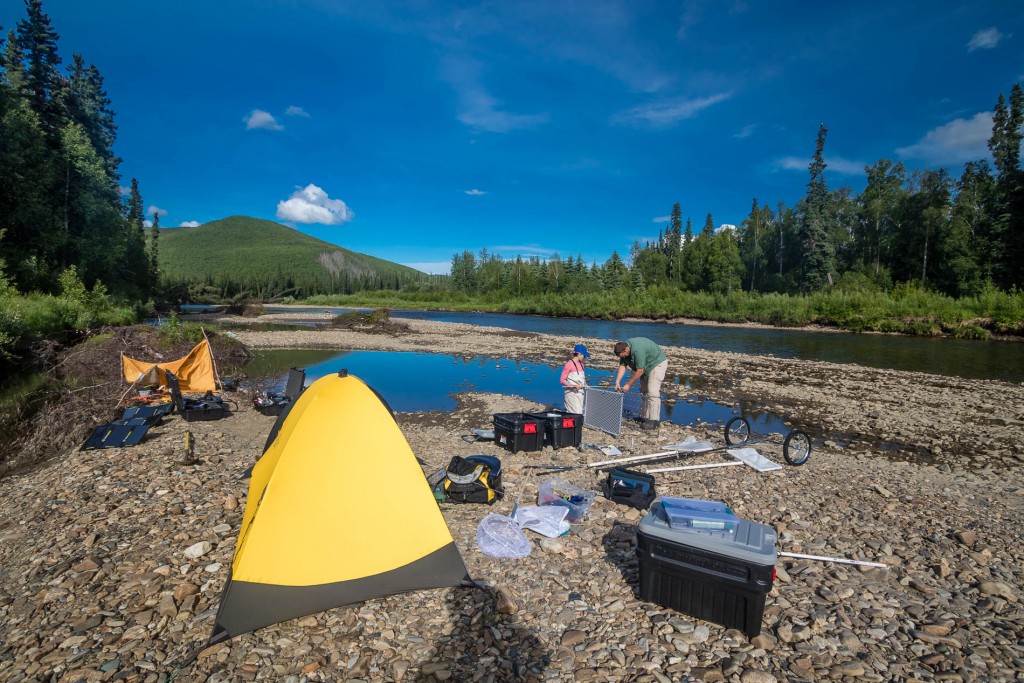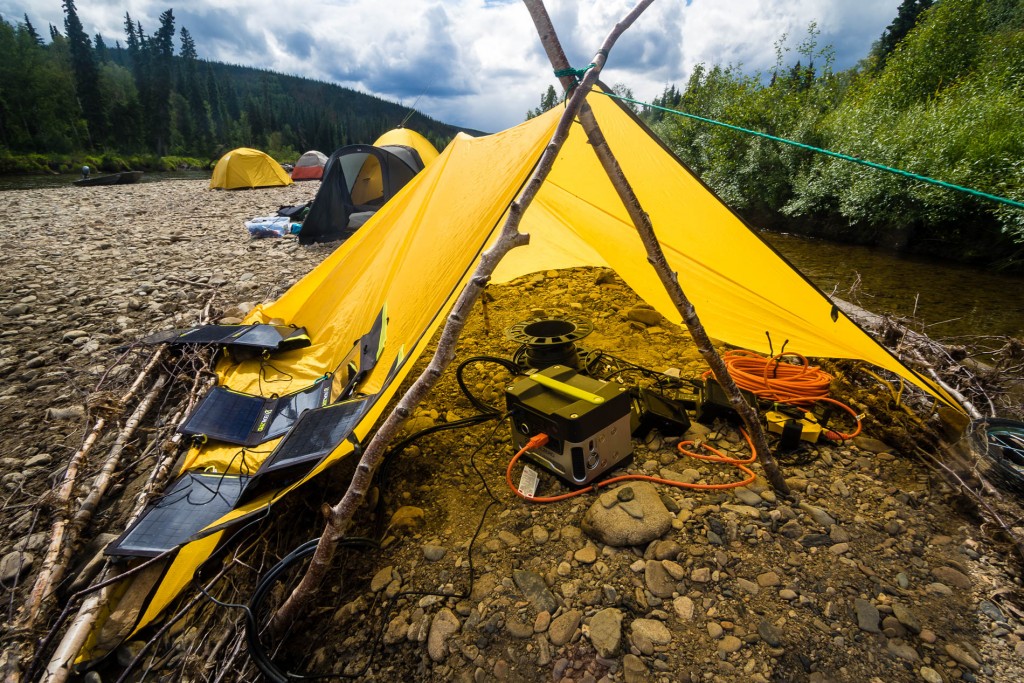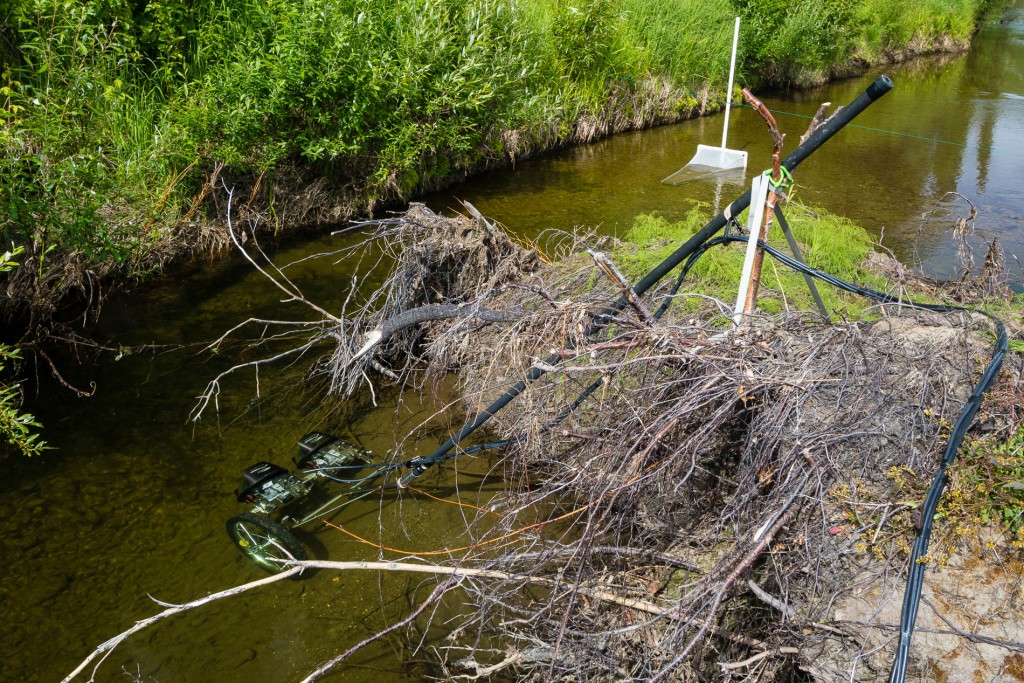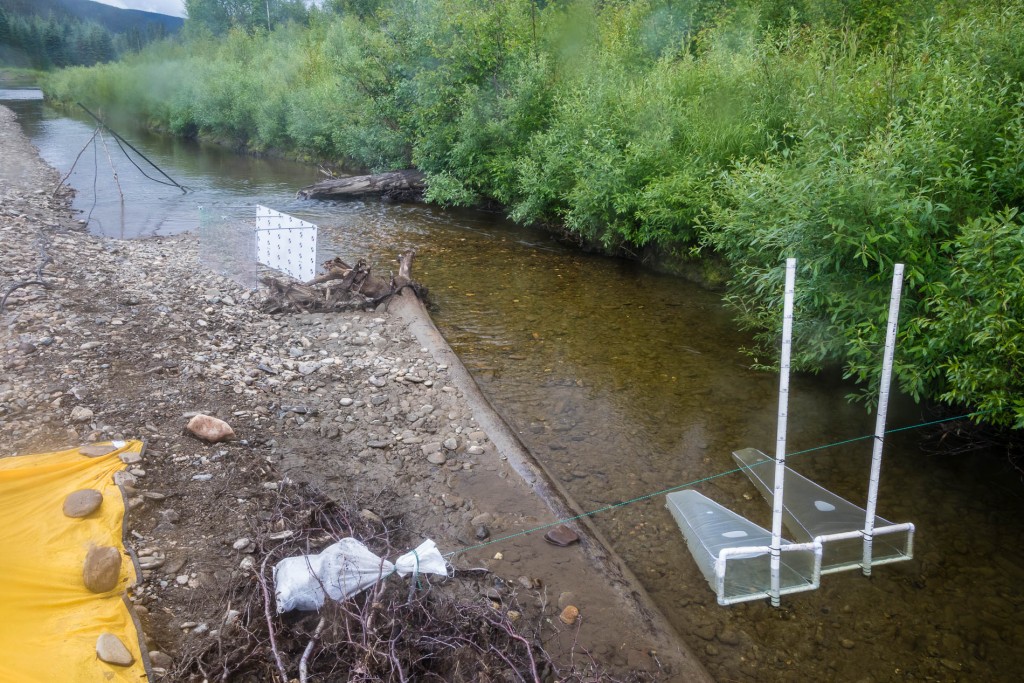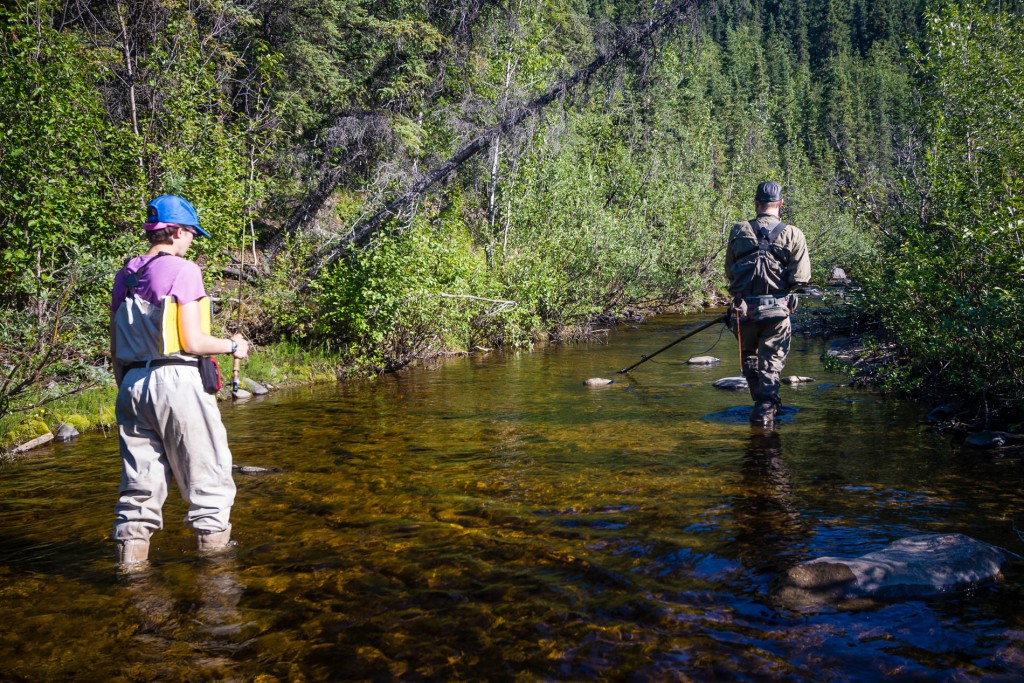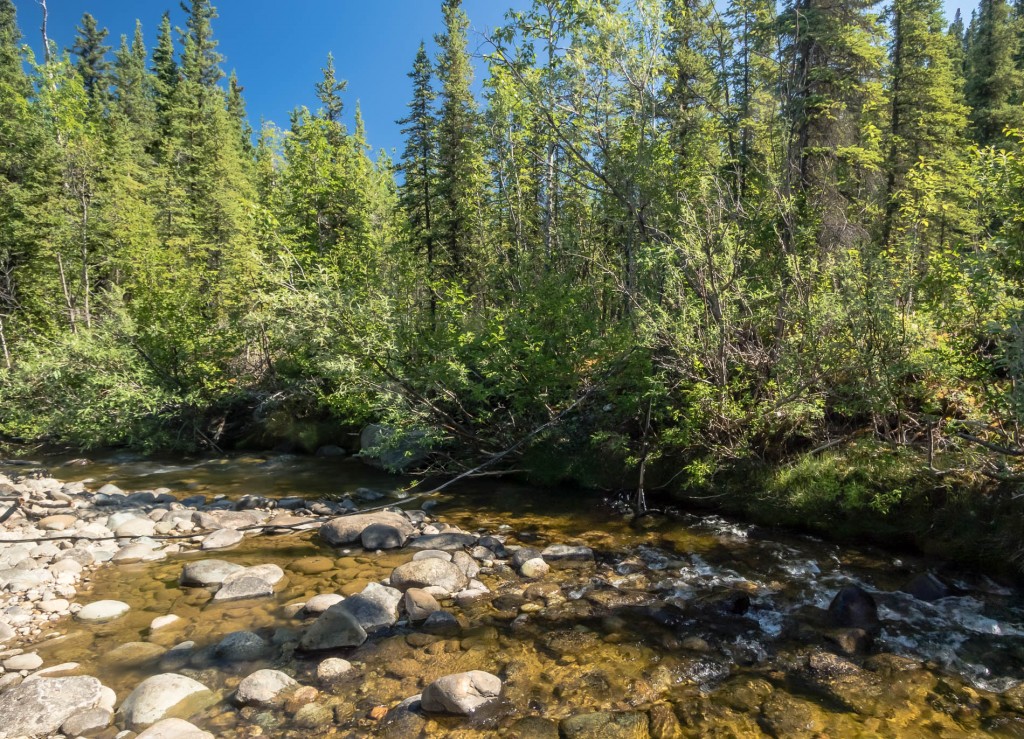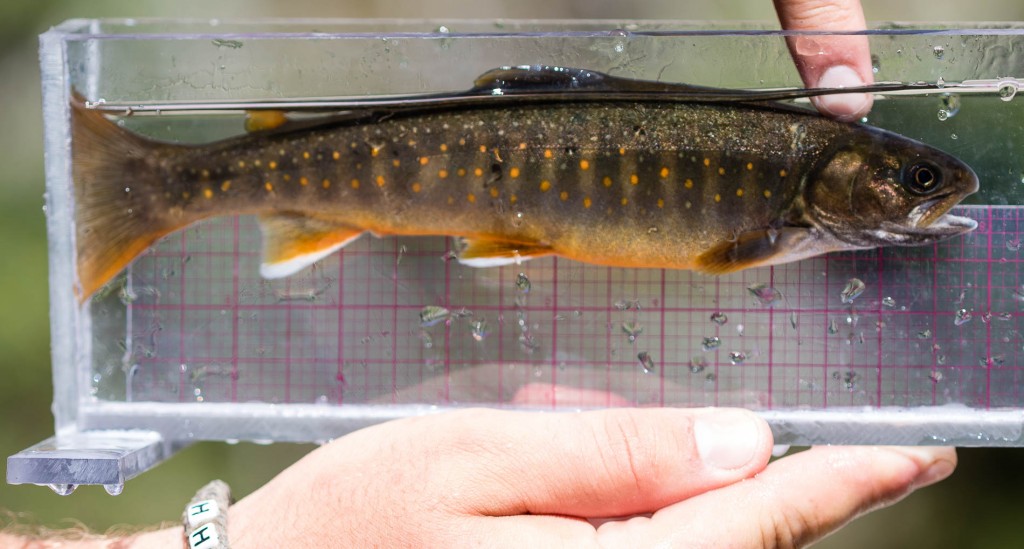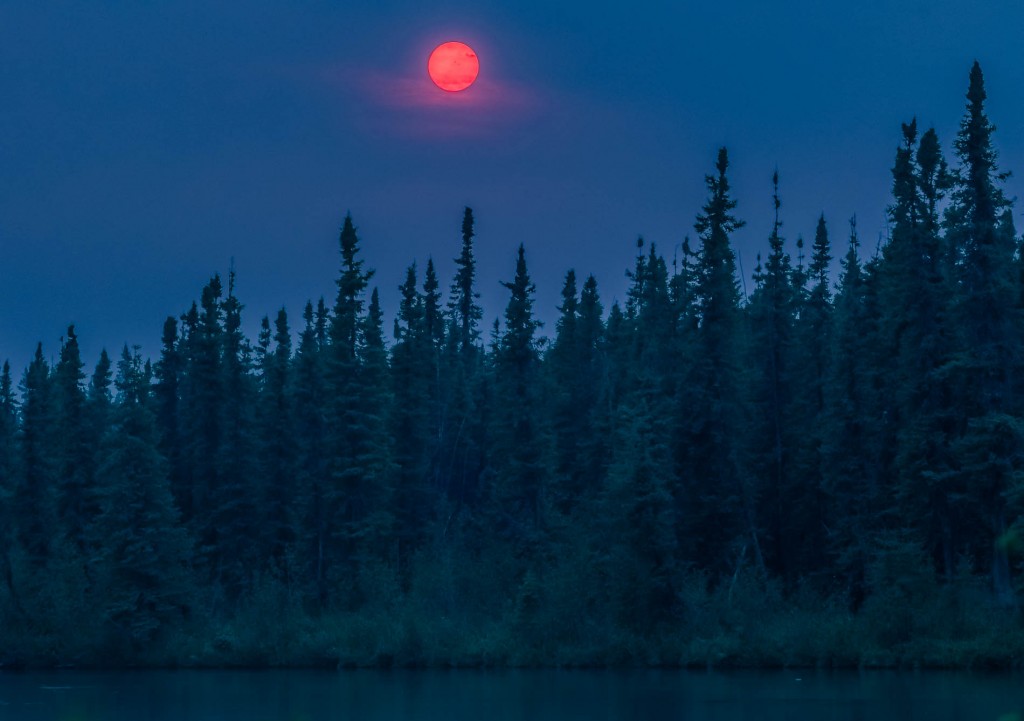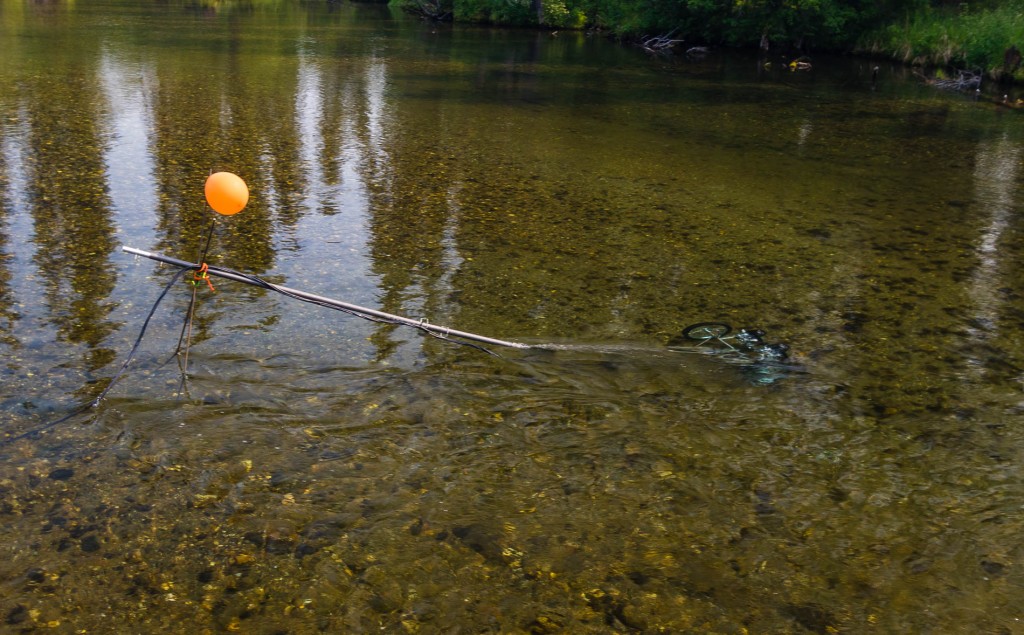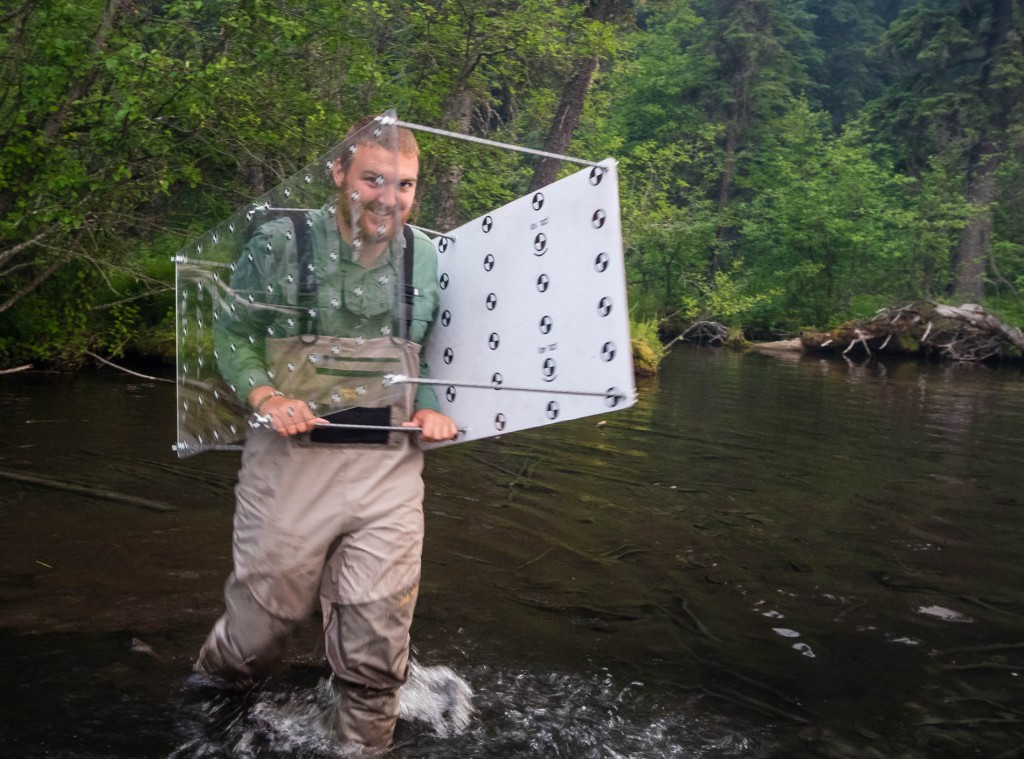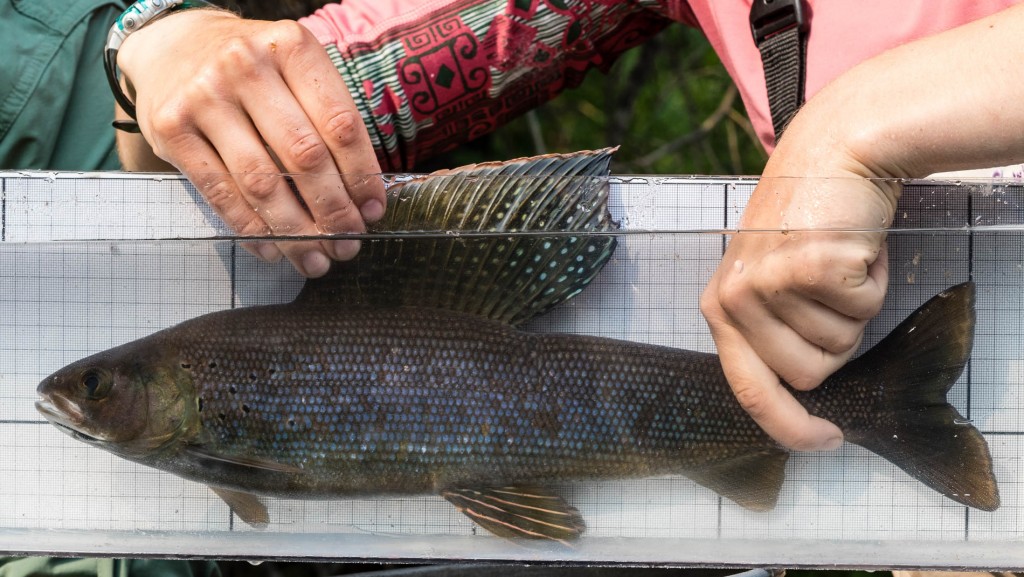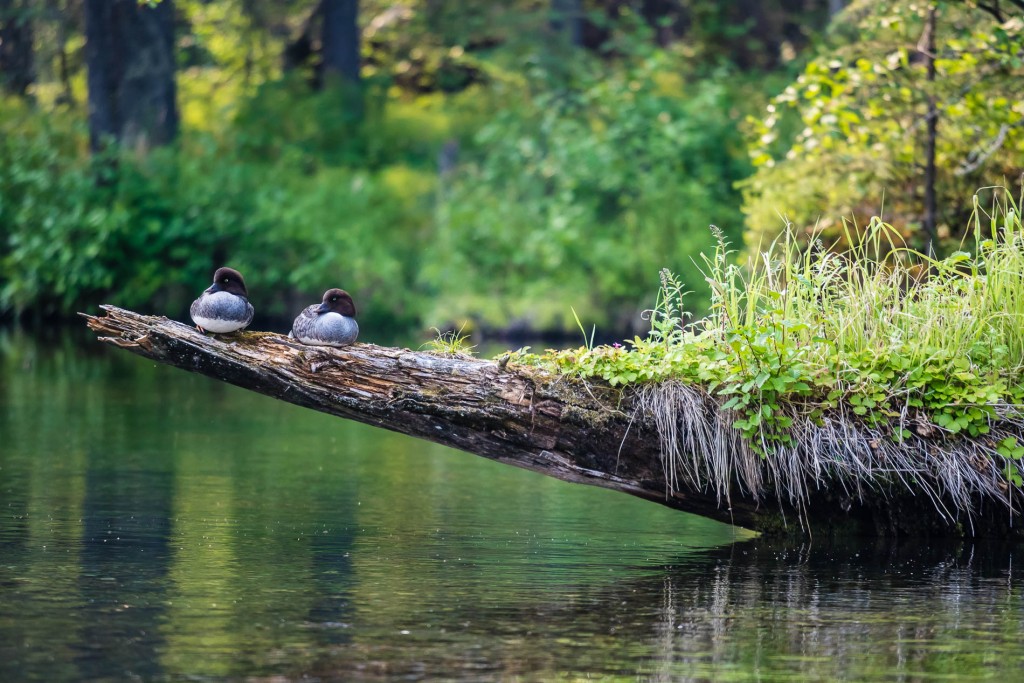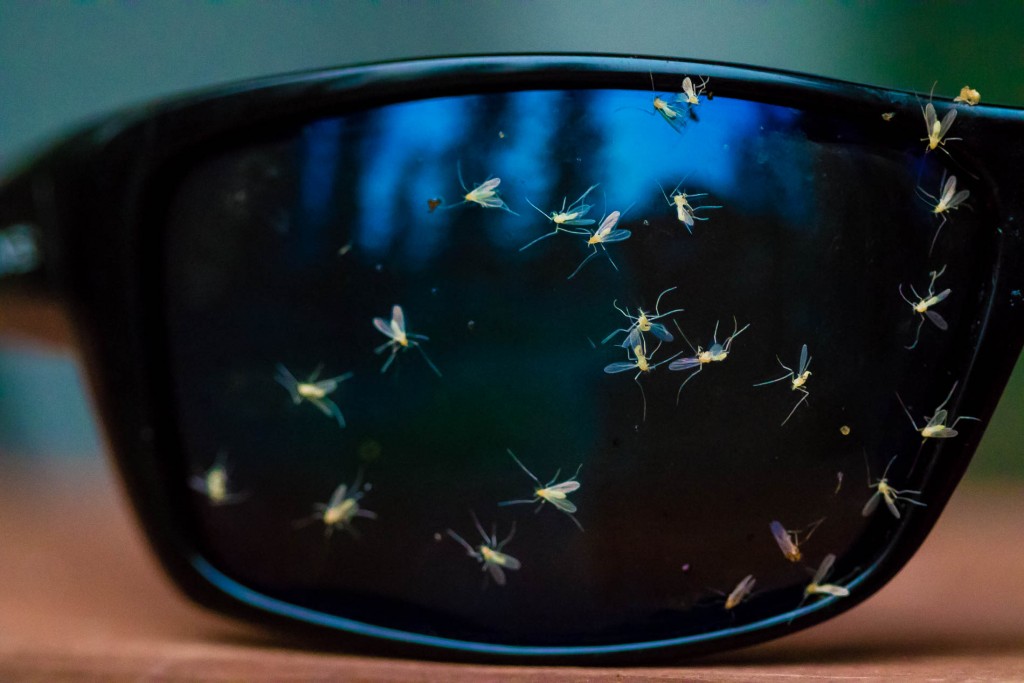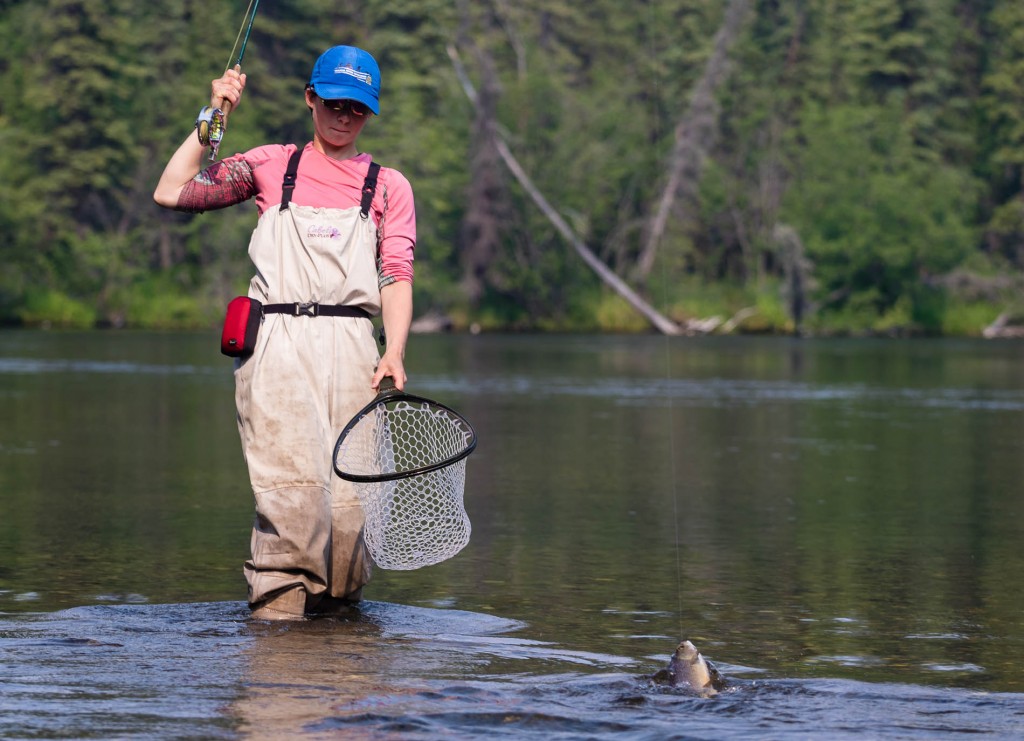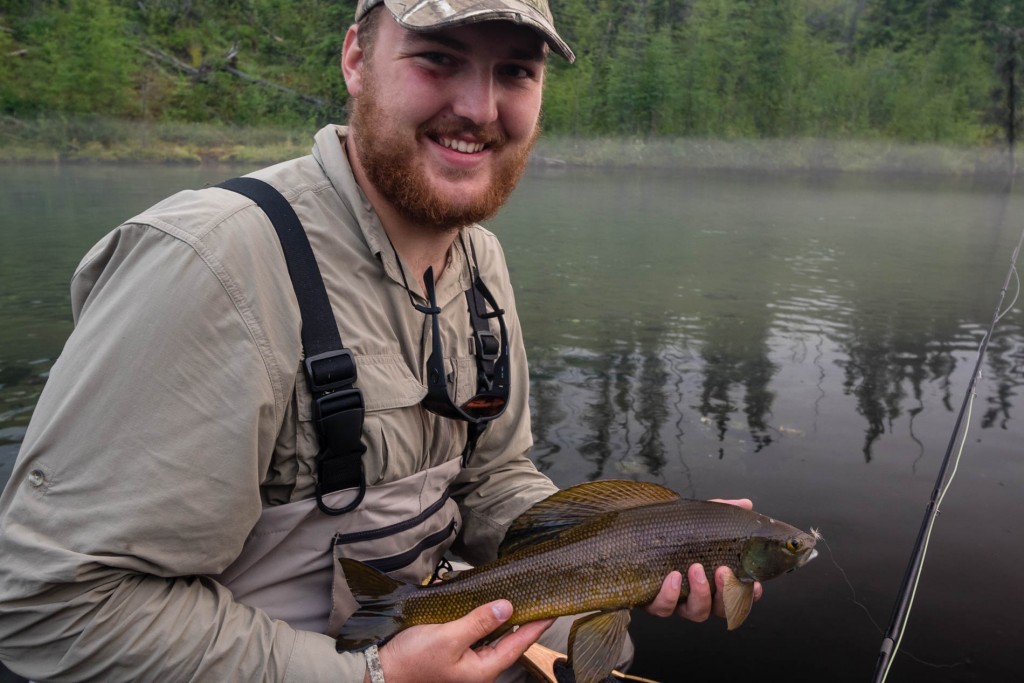We just completed a 15-day marathon of sampling to begin our first real field season. Despite experiencing the setbacks and equipment failures inherent in any first attempts at a complicated protocol, we obtained several good data videos from all three study sites.
Here’s a 7-minute video of our work and some of the fish video:
Each data set consists of a stereo pair of high-definition videos of feeding fish (calibrated for 3-D measurement), a drift net sample representing the prey available to the fish in the water column during the time we were filming, and diet samples from several fish collected immediately after filming. Ideally the stomach samples come from the same fish we observed on video, and we had a high success rate capturing the exact fish we wanted with a well-placed dry fly (except for the tiny Chinook salmon, which we captured with a dip net). We also collect physical data such as water temperature and a spatially explicit map of water velocity, which we measure with the 3-D video system by throwing velocity tracers (neutrally buoyant pieces of Israeli cous cous) into the water upstream of the filming location after we’re done with the fish. We will use these data to test model predictions of the feeding behavior of the fish against many aspects of their real feeding behavior, including the spatial distribution of prey captures, the size structure of their diet, and the rate of prey captures.
First we worked on the Chena, filming very young juvenile Chinook salmon.
A tarp protected our solar battery and the viewers receiving and recording the HDMI feed from the cameras.
A drift net was generally placed in line to experience a similar density of insects as the fish we filmed, but far enough away that we could place and remove it without disturbing the fish.
On the Chena we used a 100-micron drift net side-by-side with our standard 250-micron net to capture the tiniest prey consumed by small juvenile salmon.
After the Chena and a two-day break to fix or modify equipment, we backpacked hundreds of pounds of sampling gear far up Panguingue Creek to film its small population of dwarf dolly varden. Half-way through this trip, Professor Grossman came up from Georgia to join us for the remainder of the month’s sampling.
We photograph every specimen we stomach pump, so that we can determine which diet samples correspond to which fish on the video.
After another two-day break to upgrade our batteries, camera mounts, and other things, we boated to the Clearwater to begin work on Arctic grayling. The beautiful sunny weather we experienced on Panguingue Creek was replaced by a smoky haze as a million acres of Alaska went up in flames in every direction (but none close enough to threaten us directly).
The smoke turned the sun a crazy shade of red in the evening.
The purpose of the balloon is to prevent boats from running over our cameras.
Each trip ended with a long list of things to make, fix, do, or improve. By the end of our last video recording we were limping back to base camp at midnight after a 14-hour day, covered in no-see-um bites (never previously a problem for me in Alaska, they were as bad as North Slope mosquitos for an hour or so), in a jetboat jump-started from a camera battery which only had juice left because of a different glitch in that system. The thickest midge hatch I’ve ever seen made it impossible to drive the boat without sunglasses, and even then I was constantly wiping my eyes to clear out the ones that slipped past the glasses. We all slept really well that night.
As you can see in the video, it wasn’t all that rough. We all had some fun fly fishing during breaks in places that wouldn’t disturb our filming. Josh and Sierra, our field techs, are both fairly new to the sport but catching on fast:
We look forward to returning to the field in July with everything relatively streamlined and polished, ready to collect even better data.

